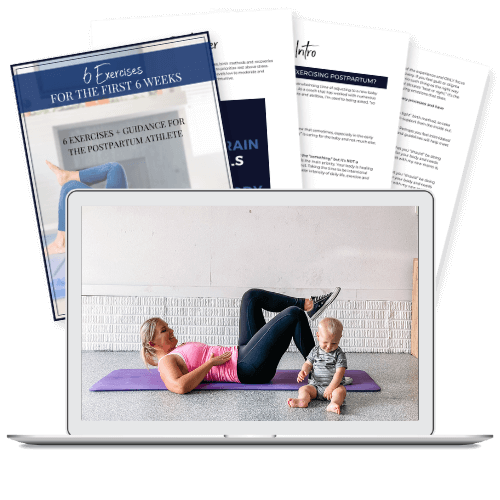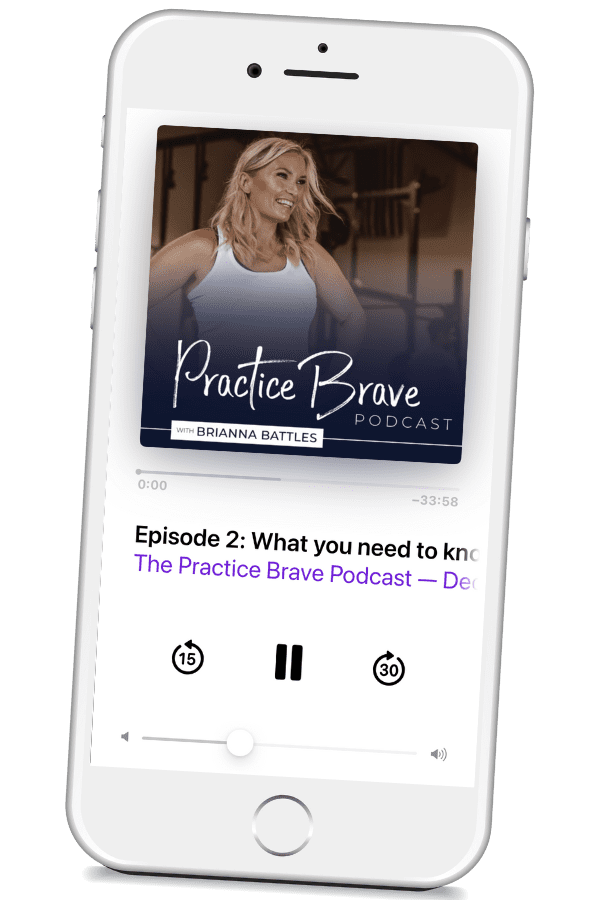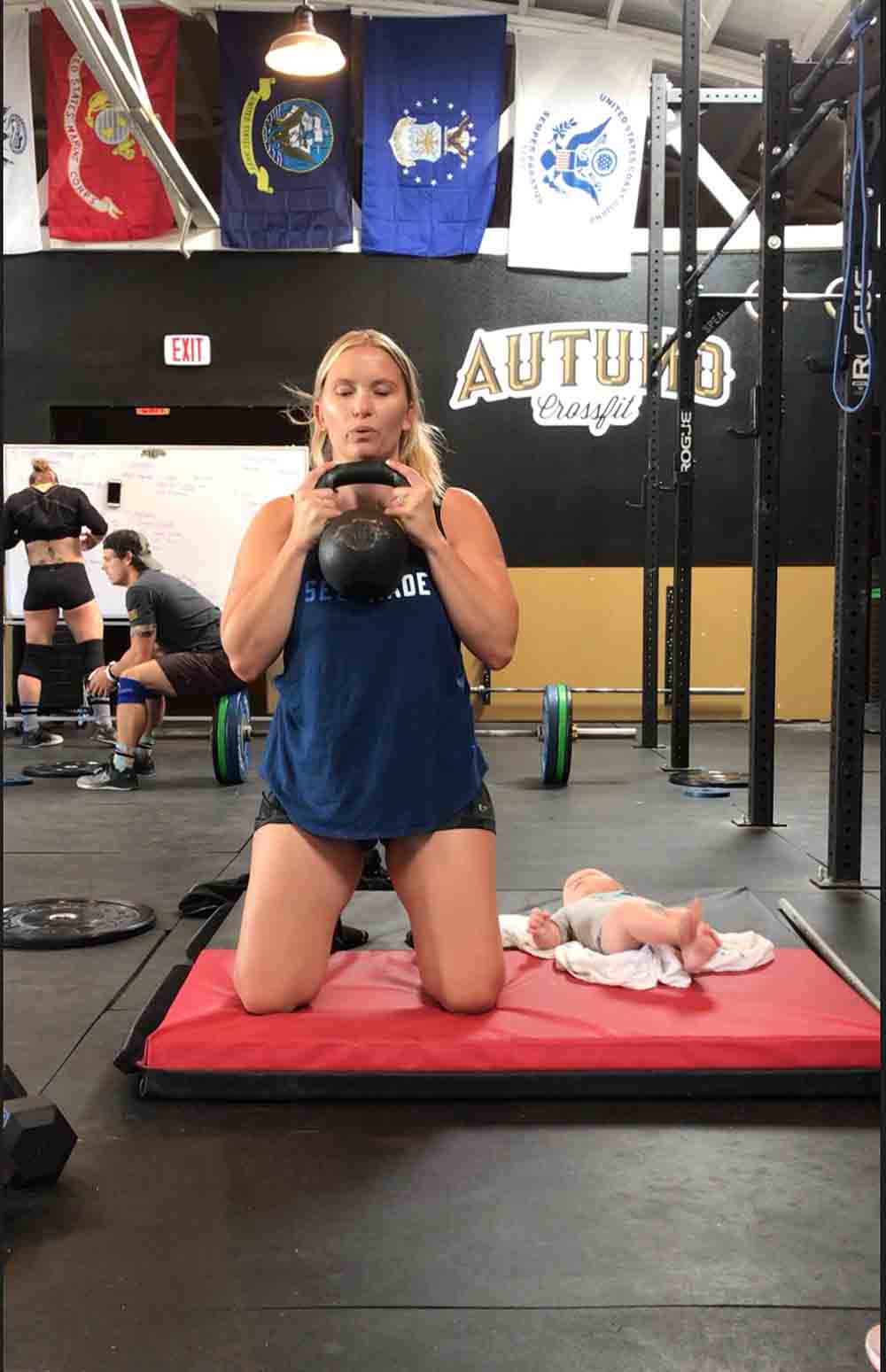
We often have a skewed idea of how long the body takes to heal postpartum. Even in the absence of core or pelvic floor symptoms the body does not “bounce back” in a handful of weeks. Even someone with a routine vaginal delivery with no interventions or complications, your body will still be recovering for months, not weeks. So how do we return to exercise postpartum? Read on to learn.
Do you have to wait until 6 weeks postpartum to start exercising?
No. While the 6 week postpartum visit with your medical provider isn’t a green light to return to exercise as you were pre-baby, it’s also later than ideal to begin exercises for your core and pelvic floor recovery.

Exercises You Can Do Early Postpartum
The early postpartum period is a time to rest, recover, and rehab. During this phase you’ll want to focus on connecting to your core and pelvic floor through breathwork, gentle core contractions, and pelvic floor lifts. You can also use this time to gradually increase your walking distance and non-exercise daily activity.
Some exercises we love for early postpartum:
- Prone breathing
- Glute bridge
- Rocking
Learn more with the free e-book: 6 Exercises for the First 6 Weeks Postpartum:
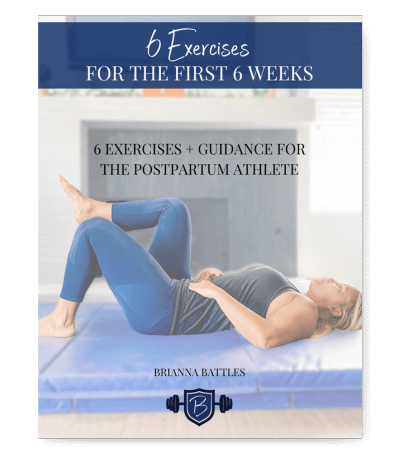
Vaginal Birth vs Cesarean Section
While recovery for a vaginal birth and a cesarean section are the same in many ways, there are a few differences.
A c-section cuts through multiple layers of muscle and tissue. You’ll need to allow time for the scar to heal before increasing the intensity or load of your workouts. Once the scar is healed, you may also find scar massage beneficial to improve the look and feel of your scar.
Even though you may not have given birth vaginally, that doesn’t exempt you from the need for pelvic floor recovery with a c-section. Pregnancy itself still puts excess pressure onto your pelvic floor. You’ll want to take the time to rehab your core and pelvic floor to help reduce your risk of complications and improve your long term athleticism.
Postpartum core and pelvic floor disorders
While incontinence, pelvic organ prolapse, and diastasis recti are not specifically pregnancy or postpartum disorders, having a baby does put you at a higher risk for those core and pelvic floor issues. As you reintroduce movements postpartum, it’s important to note if any core or pelvic floor symptoms appear and adjust your exercise accordingly.
Since how you do an exercise typically matters more than which exercises you do, there’s not an easy safe vs unsafe list of exercises when it comes to core and pelvic floor health. Instead, we look at symptoms and if you can adjust your movement strategies to help you reduce your symptoms. Some strategies may include breathing patterns, alignment, and tension management.
When to return to lifting postpartum
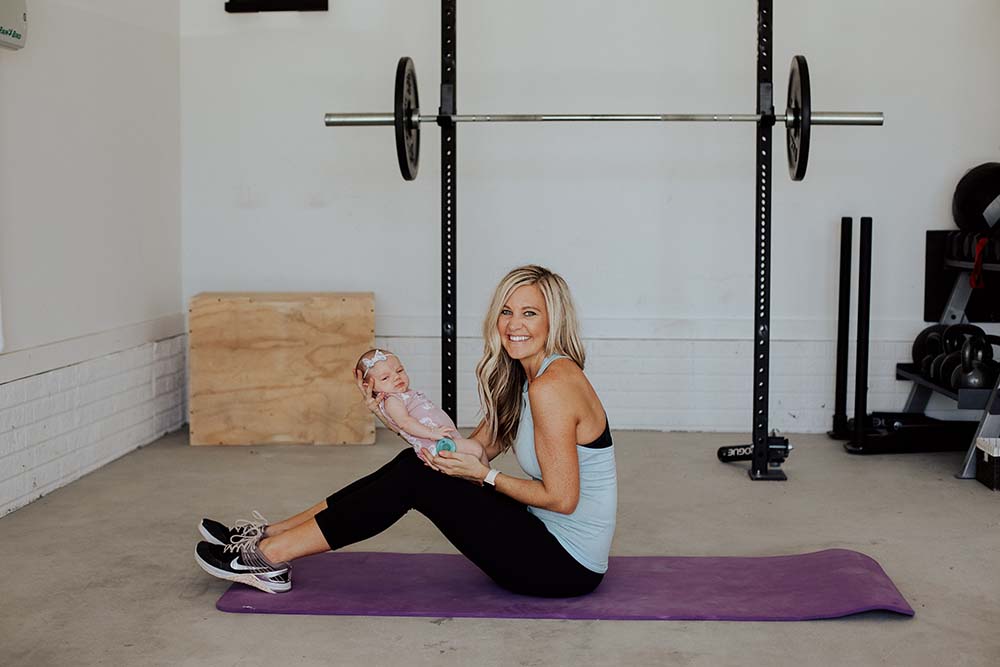
No matter how much you lifted prior to or during pregnancy, you aren’t exempt from a low and slow return to lifting postpartum. You’ll need to progress not only in weight but also in exercise selection, intensity, and endurance as well.
Starting around 6-8 weeks postpartum, you can begin to add light load to your workouts. Since this is a vulnerable time in your healing, it’s not recommended to add high volume, high intensity, or high load training at this time.
Before increasing the intensity of your workouts, it’s important to first master bodyweight movements, breathing strategies, and learn to reduce tension to ensure you’re not sending excess pressure down into your pelvic floor or out into your midline.
When to return to impact exercise after pregnancy

A return to impact exercises like running or jumping is not recommended prior to 12 weeks postpartum. Before you start adding impact, it’s important to focus on rebuilding core and pelvic floor connection, balance, and single leg strength.
Once you are ready to add impact, you’ll want to begin by introducing impact drills to help your pelvic floor train coordination. If you’re able to progress through impact drills without symptoms, the next step is moving on to interval training and speed work before working to build endurance.
While it may seem like a slow jog would be a better reintroduction to running, interval speed work is actually less impact on the pelvic floor. With the slower jog, you’re more likely to strike the ground harder and more often with your feet leading to more pressure on the pelvic floor.
Postpartum exercise does not have to be boring, but it’s important to respect the changes your body has experienced, and begin your return to exercise with self awareness and a strategic recovery plan. Your body has changed, your lifestyle has changed and what you do now can help set you up for a LIFETIME of athleticism, allowing you to continue to do the activities you love for years to come.
If you’re ready for strategic, relatable programming that bridges the gap between core and pelvic floor rehab and the fitness you want to do, join the thousands of other athletes inside The 8-Week Postpartum Athlete Training Program.
Rehab your core and pelvic floor, rebuild your strength, and return to the fitness you love.
Read More: 3 Tips to Exercise with a Prolapse


